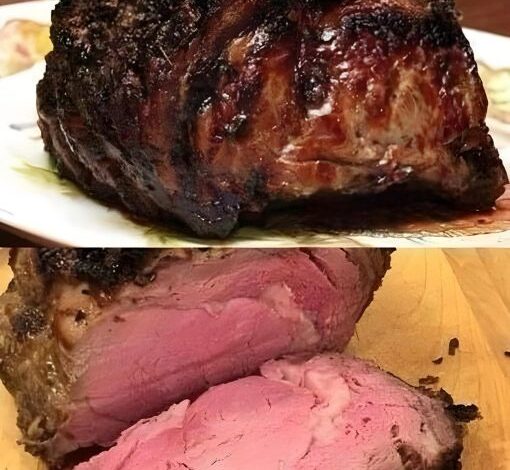The Ultimate Recipe for Ribeye Steak: An Experience for the Senses

The Ultimate Guide to Perfect Prime Rib
Few dishes embody indulgence and elegance quite like a beautifully prepared prime rib. With its tender, juicy texture and rich flavor, this luxurious cut of beef is a show-stopper for any occasion. Whether you’re hosting a grand dinner or treating yourself to an exceptional meal, mastering prime rib is an achievement worth savoring. Here’s your step-by-step guide to creating a prime rib that’s nothing short of perfection.
Choosing the Finest Cut
The foundation of a sublime prime rib lies in selecting the right roast. Opt for a bone-in prime rib, ideally weighing between 6–8 pounds. The bone not only enhances the meat’s flavor but also helps retain its moisture during cooking. This choice ensures a depth of flavor and succulence that elevates your roast to gourmet status.
Preparation: Elevating Flavor
With your premium cut in hand, preparation is key. Generously season your prime rib to create layers of flavor.
What You’ll Need:
- Olive oil, to coat the roast and act as a base for seasoning.
- Salt and freshly cracked black pepper, for a classic and robust flavor profile.
- Garlic cloves, for added depth—insert them into small incisions in the meat for bursts of rich, aromatic goodness.
Rub the olive oil over the entire surface of the roast, then massage in the salt and pepper. Let the seasoned meat sit at room temperature for about an hour to ensure even cooking.
Creating a Perfect Crust
The hallmark of an exceptional prime rib is its golden-brown crust. Achieve this by starting the cooking process with a searing stage:
- Preheat your oven to 500°F (260°C).
- Place the seasoned roast on a rack within a roasting pan. The rack allows heat to circulate evenly, ensuring a uniform crust.
- Roast for 15 minutes at this high temperature to lock in the juices and form that irresistible crust.
Slow and Steady Roasting
After the initial searing, reduce the oven temperature to 325°F (160°C) and continue roasting. This gentle cooking process allows the meat to cook evenly while maintaining its tenderness.
Pro Tip: Use a meat thermometer to ensure perfect doneness:
- Rare: 120°F (49°C)
- Medium-rare: 130°F (54°C)
- Medium: 140°F (60°C)
Insert the thermometer into the thickest part of the roast, away from the bone, for the most accurate reading.
Resting for Juiciness
Once your prime rib reaches the desired temperature, remove it from the oven and let it rest for 15–20 minutes. This step is non-negotiable; it allows the juices to redistribute throughout the meat, ensuring each slice is moist and flavorful. Skipping this step risks losing those precious juices when carving.
Carving and Presentation
Carve your prime rib into thick, generous slices, letting the marbled texture and pink center take center stage. Pair it with classic accompaniments like creamy mashed potatoes, roasted vegetables, or a crisp green salad. For added indulgence, serve with a rich au jus or a dollop of horseradish sauce.
A Feast to Remember
With this comprehensive guide, you’ll craft a prime rib worthy of any celebration. Its tender, juicy bite and show-stopping appearance make it a centerpiece that’s sure to impress. Whether it graces a holiday table or adds a touch of luxury to an intimate gathering, this prime rib recipe promises a meal to remember.
Enjoy every succulent bite—you’ve earned it!